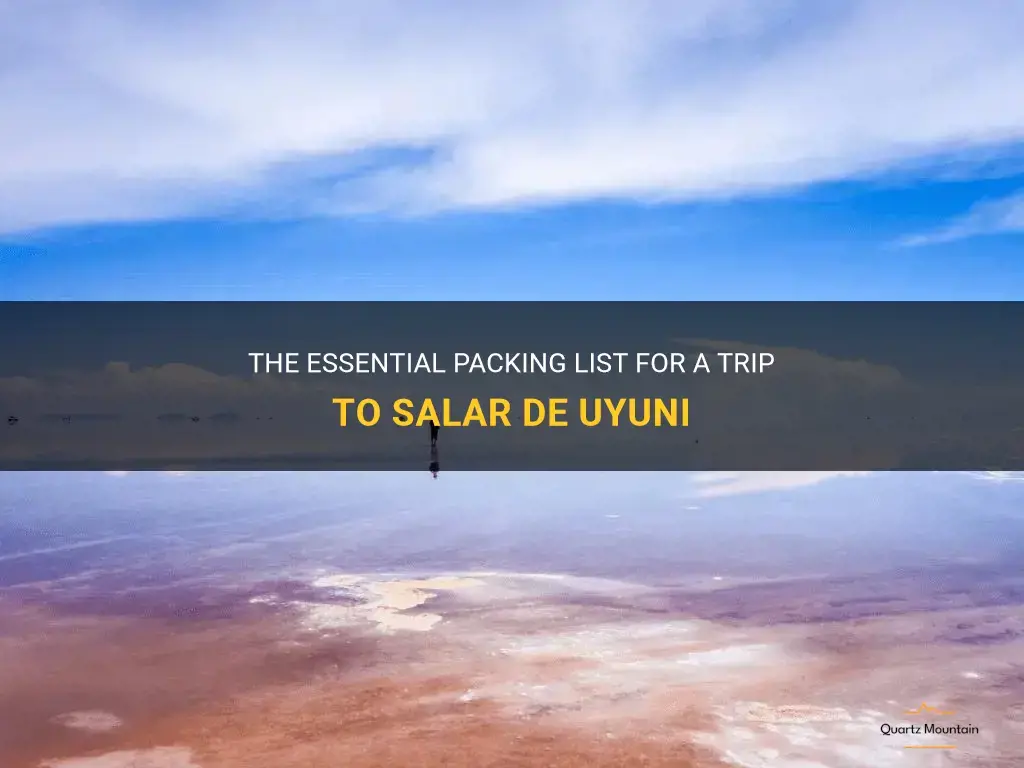
Preparing for a trip to the Salar de Uyuni, also known as the largest salt flat in the world, requires some careful planning and packing. From capturing mesmerizing photos of the vast white landscapes to surviving extreme weather conditions, there are a few essential items that should not be overlooked. Whether you're a seasoned traveler or a first-time explorer, this comprehensive packing list will ensure that you have everything you need to make the most of your visit to this otherworldly destination. So, get ready to embark on an unforgettable adventure and let's dive into the essential packing list for a trip to Salar de Uyuni!
| Characteristic | Value |
|---|---|
| Location | Salar de Uyuni |
| Altitude | 3,656 meters |
| Weather | Cold and dry |
| Temperature | Varies between -20°C and 15°C |
| Clothing | Warm layers, winter jacket, hat, gloves, and scarf |
| Footwear | Waterproof boots |
| Accessories | Sunglasses, sunscreen, lip balm, and moisturizer |
| Medications | Altitude sickness medication, pain relievers |
| Photography Gear | Camera, spare batteries, tripod, wide-angle lens |
| Electronics | Power adapter, portable charger |
| Travel Documents | Passport, visa, travel insurance, vaccination certificates |
| Money | Cash (local currency and US dollars), credit cards |
| Language | Basic Spanish phrases |
| Transportation | 4x4 vehicles, tours |
| Accommodation | Hotels, hostels, or camping |
| Food and Water | Bottled water, snacks, and meals (often provided by tours) |
| Safety | Travel insurance, first aid kit, emergency contact numbers |
| Other Essential Items | Backpack, day pack, sleeping bag, toiletries |
What You'll Learn
- What essential items should I pack for a visit to Salar de Uyuni?
- Are there any specific clothing recommendations for a trip to Salar de Uyuni?
- Do I need to bring any specific equipment or gear for photography at Salar de Uyuni?
- What type of footwear should I pack for exploring the salt flats?
- Are there any additional items that are recommended for a comfortable and enjoyable trip to Salar de Uyuni?

What essential items should I pack for a visit to Salar de Uyuni?
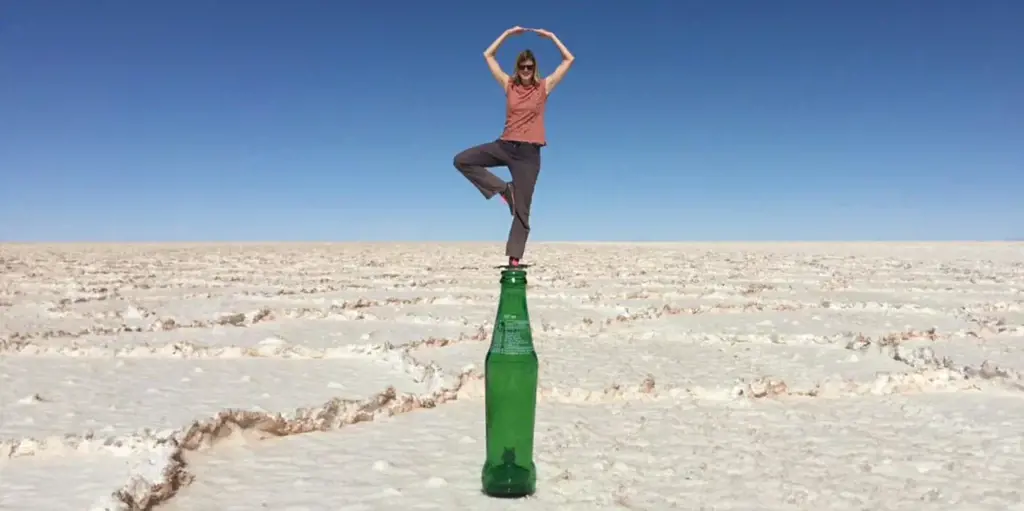
Salar de Uyuni, located in Bolivia, is the world's largest salt flat and a popular tourist destination. If you're planning a visit to this unique and mesmerizing natural wonder, it's essential to pack some specific items to ensure a comfortable and enjoyable experience.
- Sunscreen and Sunglasses: With the Salar de Uyuni's vast expanse of blinding white salt, the sun's rays can be incredibly intense. Protect your skin with a high SPF sunscreen and your eyes with polarized sunglasses to avoid discomfort and potential sunburn.
- Warm Clothing: Despite being located in a high-altitude desert, Salar de Uyuni can get extremely cold, especially during the nighttime temperatures drop significantly. Bring warm clothing, including a jacket, thermals, hats, and gloves to stay comfortable in the chilly conditions.
- Comfortable Shoes: Exploring the salt flats involves a significant amount of walking and climbing, so it's important to wear comfortable and sturdy shoes. Opt for closed-toe shoes that provide good traction and ankle support to navigate the uneven salt surface.
- Camera and Spare Batteries: Salar de Uyuni presents countless photo opportunities, from its mirror-like reflections after rainfall to its unique perspective distortions. Make sure to bring a camera to capture these stunning moments and pack spare batteries to keep shooting all day.
- Water and Snacks: It's crucial to stay hydrated while exploring the salt flats, as the high altitude and dry climate can cause dehydration. Bring a reusable water bottle and fill it up as needed throughout your visit. Additionally, pack some energy-boosting snacks like granola bars or dried fruits to keep your stamina up.
- Power Bank or Portable Charger: Given the remote location of Salar de Uyuni, finding power outlets might be a challenge. Carry a power bank or portable charger to keep your electronic devices charged, ensuring you won't miss capturing any memorable moments.
- First Aid Kit: While accidents are rare, it's always wise to pack a basic first aid kit. Include essentials like bandages, antiseptic ointment, pain relievers, and any necessary personal medications to handle minor injuries or illnesses.
- Cash and Toilet Paper: Credit card acceptance can be limited in the small towns near Salar de Uyuni, so it's important to carry enough cash for meals, transportation, and any souvenirs you might want to purchase. Additionally, bring some toilet paper as public restrooms may not provide it.
Remember, when visiting Salar de Uyuni, it's essential to follow responsible tourism practices and respect the fragile ecosystem. Avoid littering, stay on designated paths, and listen to your local guide's instructions to ensure a sustainable and enjoyable experience for everyone.
Essential Items to Pack for a Memorable Sea Voyage
You may want to see also

Are there any specific clothing recommendations for a trip to Salar de Uyuni?
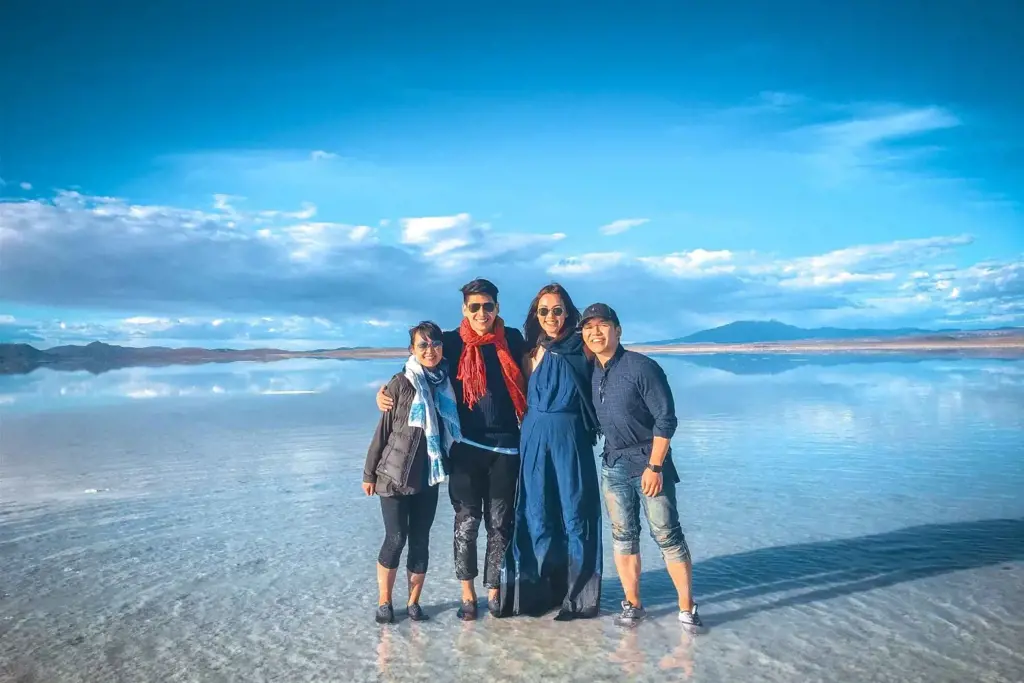
Salar de Uyuni, located in Bolivia, is the world's largest salt flat and a popular tourist attraction. Due to its unique and extreme natural environment, there are specific clothing recommendations for travelers planning a trip to Salar de Uyuni. Here are some guidelines to help you prepare for your visit:
- Layering is key: Salar de Uyuni is located at an altitude of around 3,600 meters (11,800 feet) above sea level, which means the weather can be unpredictable. It is important to dress in layers so that you can adjust your clothing accordingly throughout the day. Start with a base layer made of moisture-wicking material to keep you dry, and add a warm mid-layer like a fleece or down jacket. Finally, top it off with a waterproof and windproof outer layer to protect you from the harsh elements.
- Warm accessories: The temperature on the salt flat can drop significantly, especially during the early morning and evening. Bringing warm accessories such as a hat, gloves, and a scarf is essential to keep your extremities warm. Opt for materials like wool or synthetic fibers that retain heat even when wet.
- Sturdy footwear: The salt flat has a crusty surface that can be sharp and uneven in certain areas. It is crucial to wear sturdy and comfortable footwear to protect your feet while exploring the area. Hiking boots or waterproof shoes with good traction are recommended. Avoid open-toed shoes or sandals as they will not provide adequate protection.
- Sunglasses and sunscreen: The reflective nature of the salt flat can intensify the sun's rays, making it essential to protect your eyes and skin. Wear sunglasses with UV protection to shield your eyes from the bright sunlight. Additionally, apply a high SPF sunscreen to exposed areas of your body to prevent sunburns.
- Extra socks and changes of clothes: The salt flat can be wet and muddy in certain areas, and it is common for visitors to get their feet and shoes soaked. Bringing extra socks and even a change of clothes is advisable to keep yourself comfortable throughout the trip. It is also recommended to carry a waterproof bag or plastic bags to store any wet or dirty items.
- Warm sleepwear: If you plan on spending a night in a salt hotel or camping in the salt flat, it is important to pack warm sleepwear, as the temperature can drop significantly during the night. A thermal base layer, along with a warm sleeping bag and a cozy hat, will ensure a comfortable night's sleep.
In conclusion, when planning a trip to Salar de Uyuni, it is important to pack appropriate clothing to stay comfortable and protected in the unique and extreme environment. Layering, warm accessories, sturdy footwear, sunglasses, sunscreen, extra socks, and warm sleepwear are all essential items to consider. By following these clothing recommendations, you can fully enjoy your experience at Salar de Uyuni.
The Essential Packing List for a Fun-Filled 3 Days at Disneyland
You may want to see also

Do I need to bring any specific equipment or gear for photography at Salar de Uyuni?
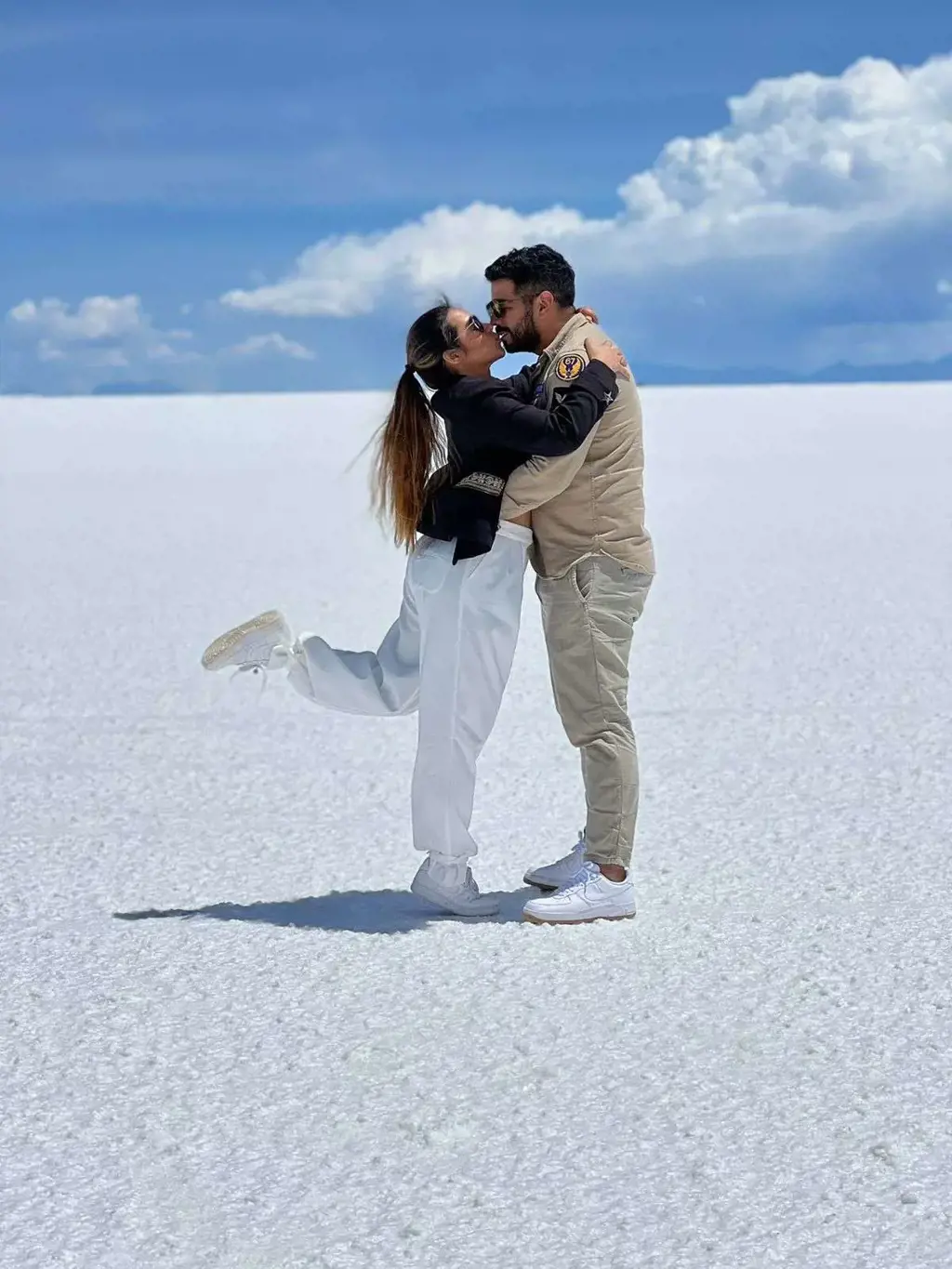
When planning a photography trip to the stunning Salar de Uyuni in Bolivia, it is important to consider the specific equipment and gear that you will need to ensure the best possible results. The Salar de Uyuni is the world's largest salt flat and offers a unique and breathtaking setting for photography. To capture the beauty of this incredible landscape, there are a few key items that you should bring along.
- Camera: The most important piece of equipment for any photographer is, of course, a camera. For capturing the vastness and intricate details of the Salar de Uyuni, a high-quality DSLR or mirrorless camera is recommended. These types of cameras allow for full manual control, giving you the flexibility to adjust settings such as aperture and shutter speed to capture the scene exactly as you envision it.
- Wide-angle lens: Wide-angle lenses are essential for capturing the expansive beauty of the Salar de Uyuni. A lens with a focal length of 10-24mm is ideal, as it allows you to capture the vastness of the salt flat while still including foreground elements for added depth and interest.
- Tripod: A sturdy tripod is a must-have for long-exposure shots and for ensuring sharp images. In the Salar de Uyuni, there are many opportunities for capturing stunning reflections in the water, and a tripod will help to keep your camera steady and eliminate any shake.
- Filters: Neutral density (ND) filters and polarizing filters are useful tools for enhancing your photography in the Salar de Uyuni. ND filters allow you to create long exposures, capturing the movement of clouds and creating a sense of motion in the images. Polarizing filters, on the other hand, can help to reduce glare and enhance the colors of the salt flat and the sky.
- Extra batteries and memory cards: With such breathtaking scenery, you will likely be taking many photos throughout the day. It is always a good idea to have extra batteries and memory cards on hand to ensure that you don't miss any shots due to a drained battery or a full memory card.
- Lens cleaning kit: The Salar de Uyuni is a dusty environment, and salt particles can be particularly damaging to camera lenses. To keep your gear in top condition, it is recommended to bring a lens cleaning kit to remove any dust or salt residue that may accumulate.
It is important to note that the conditions in the Salar de Uyuni can be challenging, with extreme temperatures and harsh sunlight. It is advisable to bring a waterproof bag to protect your gear from the salt flats and to take precautions to shield your camera from direct sunlight to avoid overheating.
In conclusion, when planning a photography trip to the Salar de Uyuni, it is important to bring the right equipment and gear to maximize your chances of capturing stunning images. A high-quality camera, wide-angle lens, tripod, filters, extra batteries and memory cards, and a lens cleaning kit are all essential items to consider. With the right gear and careful preparation, you can capture the unique beauty of the Salar de Uyuni and create stunning photographs that will be cherished for years to come.
Essential Items to Pack for 10 Days in Spain
You may want to see also

What type of footwear should I pack for exploring the salt flats?
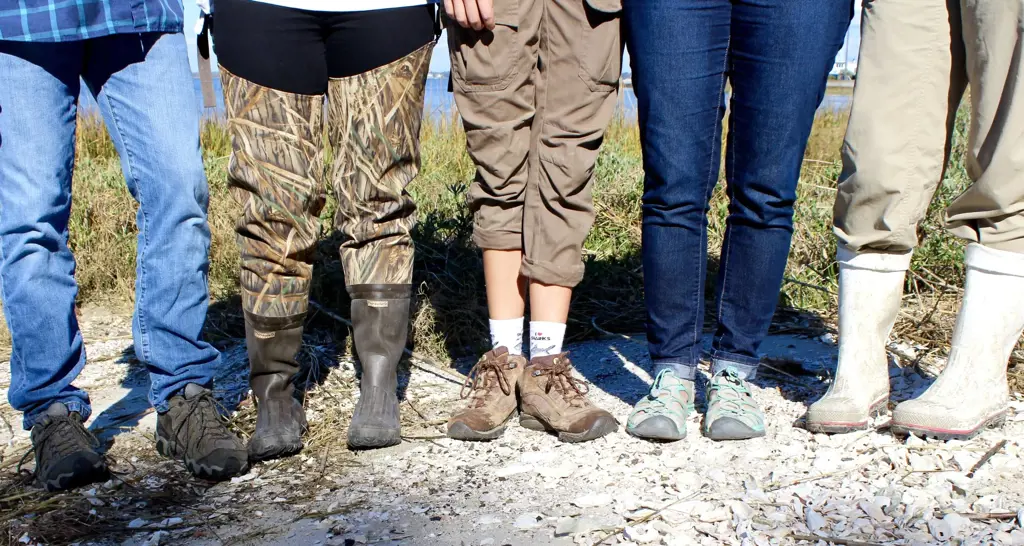
When it comes to exploring the salt flats, it is important to choose the right type of footwear. The salt flats can be a challenging terrain to navigate, with the potential for rough surfaces, sharp edges, and extreme temperatures. Here are some tips on what type of footwear to pack for your salt flats adventure.
- Sturdy and durable footwear: The salt flats can be harsh on your feet, so it is important to choose footwear that is sturdy and durable. Opt for a pair of hiking boots or sturdy shoes that provide good ankle support. Look for a pair that is made from durable materials like leather or synthetic materials that can withstand the rough terrain.
- Comfort and cushioning: Since you will be spending a lot of time on your feet, it is important to choose footwear that is comfortable and provides good cushioning. Look for shoes with cushioned insoles and ample padding around the ankles and heels. This will help to prevent fatigue and provide extra comfort during long walks or hikes.
- Slip-resistant soles: The salt flats can be slippery, especially when wet, so it is important to choose footwear with slip-resistant soles. Look for shoes that have a good tread pattern and are made from materials that provide good traction. This will help you to maintain your grip on the salt flats and prevent accidents or slips.
- Waterproof or water-resistant: The salt flats can be wet and muddy, especially after rainfall or during certain times of the year. It is therefore advisable to choose footwear that is either waterproof or water-resistant. This will help to keep your feet dry and comfortable, even in wet conditions.
- Breathable materials: The salt flats can also be hot and humid, especially during the peak summer months. It is therefore important to choose footwear that is made from breathable materials. Look for shoes with mesh or perforated uppers, which allow air to circulate and help to keep your feet cool and dry.
- Extra pair of footwear: It is always a good idea to pack an extra pair of footwear when exploring the salt flats. This is especially important if you plan on spending multiple days in the area. Having an extra pair will ensure that you have a backup in case your primary footwear gets wet, damaged, or uncomfortable.
In conclusion, when it comes to exploring the salt flats, it is important to choose footwear that is sturdy, comfortable, slip-resistant, and suitable for the conditions. By selecting the right type of footwear, you can ensure that you have a safe and enjoyable experience while exploring this unique and beautiful natural phenomenon.
Essential Items to Pack for Exploring British Columbia
You may want to see also

Are there any additional items that are recommended for a comfortable and enjoyable trip to Salar de Uyuni?
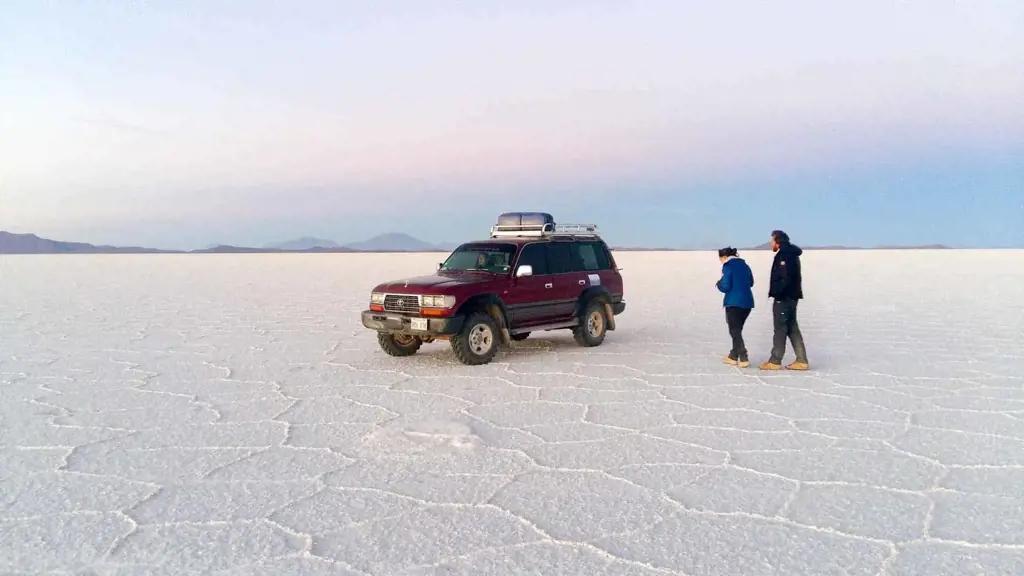
When planning a trip to Salar de Uyuni, there are a few additional items that are recommended to ensure a comfortable and enjoyable experience. Here are some suggestions to consider:
- Sunscreen and sunglasses: The Salar de Uyuni is located at a high altitude, which means you'll be exposed to strong UV rays. It is essential to protect your skin from the sun, especially if you plan to spend a lot of time outdoors. Apply sunscreen with a high SPF and wear sunglasses to shield your eyes from the intense sunlight.
- Warm clothing: Even though the Salar de Uyuni is located in Bolivia, which is near the equator, the high altitude results in colder temperatures, especially at night. Pack warm clothing such as thermal layers, jackets, hats, and gloves to stay comfortable during your trip. It's better to be prepared for colder weather and dress in layers, as temperatures can vary throughout the day.
- Comfortable footwear: Exploring the Salar de Uyuni involves walking on salt flats, which can be uneven and rough in some areas. It's important to wear comfortable and sturdy shoes to navigate these terrains easily. Opt for closed-toe shoes with good traction to prevent slips and falls.
- Water and snacks: It's always a good idea to stay hydrated, especially at high altitudes. Carry a reusable water bottle and drink plenty of water throughout the day to avoid dehydration. Additionally, pack some snacks like energy bars or fruits to keep yourself fueled during long drives or excursions.
- Power bank and adapters: Charging facilities might be limited or not available during your trip, so it's wise to carry a power bank to keep your devices charged, especially if you rely on them for navigation or photography. Additionally, bring the necessary adapters to ensure your chargers are compatible with the local electrical outlets.
- Camera gear and accessories: Salar de Uyuni is a photographer's paradise, with its breathtaking landscapes and unique features. Don't forget to pack your camera, extra batteries, memory cards, and any other accessories you may need. A tripod can also be helpful for capturing stunning long exposure shots or group pictures.
- First aid kit: Accidents or minor injuries can happen during any trip, so it's advisable to carry a basic first aid kit. Include essentials like band-aids, antiseptic wipes, painkillers, and any necessary prescription medications you may require. It's always better to be prepared for unexpected situations.
- Cash and identification: While most tour operators accept credit cards, it's a good idea to carry some cash with you for incidentals or in case of emergencies. Additionally, keep your identification documents like passports or identity cards safely with you at all times.
Remember, your comfort and enjoyment during your trip to Salar de Uyuni depend on being prepared and packing the right essentials. Consider the recommendations above to ensure a smooth and memorable experience in this breathtaking natural wonder.
The Ultimate Guide: Packing the Perfect Wardrobe for Backpacking in the UK
You may want to see also
Frequently asked questions
It is important to pack warm clothing, such as layered tops and sweaters, as temperatures in Salar de Uyuni can drop significantly, especially at night.
Yes, it is highly recommended to pack sunscreen with a high SPF as the high altitude and reflective salt flats can intensify the sun's rays and cause sunburn.
Yes, a hat is essential to provide protection from the strong sun and also to keep your head warm during the colder periods of the day.
It is advisable to bring a reusable water bottle to stay hydrated during your trip. While there are usually opportunities to buy bottled water along the way, having a reusable bottle will help reduce plastic waste.
It is recommended to pack sturdy and comfortable walking shoes or boots for your trip, as there may be uneven and rocky terrain to navigate on the salt flats. Additionally, packing a pair of waterproof shoes or boots is advisable, as the salt flats can sometimes be wet or muddy.







